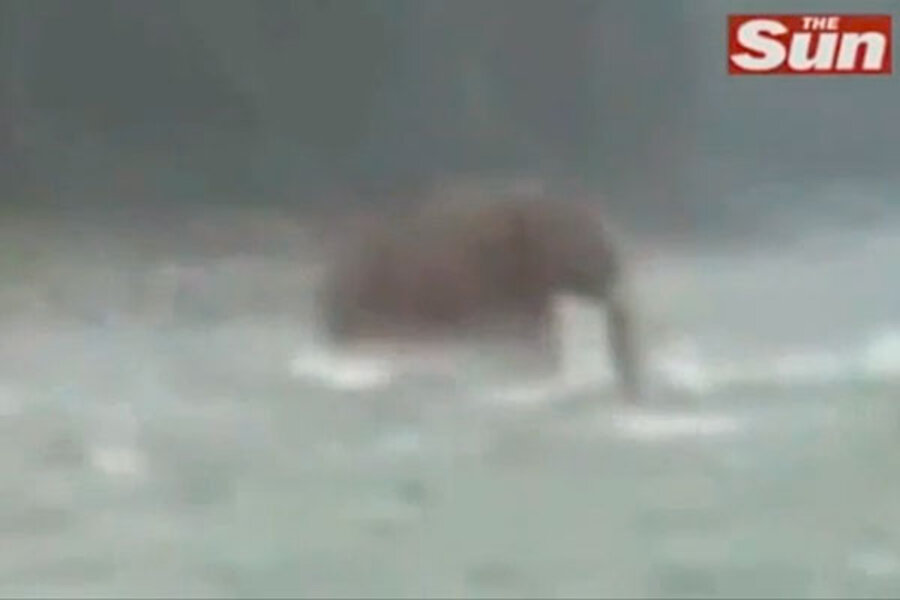Remarkably blurry video captures live 'woolly mammoth'
Loading...
According to a story in The Sun newspaper, a new video has surfaced that seems to show a live woolly mammoth — an animal the scientists say has been extinct for about four millennia. The "jaw-dropping" footage, which shows a dark, blurry creature crossing a river, was allegedly "caught by a government-employed engineer last summer in the Chukotka Autonomous Okrug region of Siberia."
The video has stirred up plenty of interest on the Web. Most viewers have settled on one of two explanations for the mysterious video — though neither includes a woolly mammoth.
Many believe the video is an outright hoax — a computer-generated elephant or mammoth digitally inserted into the scene. Those who smell a hoax point to several suspicious aspects of the video, including the fact that the man who posted the piece, a paranormal enthusiast named Michael Cohen, has been involved with several other videos of UFOs and other phenomena that are of questionable authenticity.
The brevity of the video also casts suspicion on its validity. The video is less than 10 seconds long, and ends well before the animal reaches the near shore. It's hard to imagine that a nearby person wouldn't notice a woolly mammoth until it started walking across the river, and it's even more unbelievable that the anonymous cameraman would inexplicably stop filming after 10 seconds. [If You Spot Bigfoot, Should You Shoot Him?]
The second theory is that the video is real, but that the creature is just a bear with a large fish in its mouth. That would explain its relatively small size for a mammoth, the shape of the "trunk" on its head, and the color. According to this explanation the cameraman was simply fooled by the strange shape.
There is a third explanation, which combines the two previous ones: It is both a bear and a fake; the videographer knew very well what it was, since his vision would be far better than anything we see captured on the video. He (or possibly someone else who later obtained the video) decided to present the video as a mystery for a bit of fun or publicity.
Derek Serra, a Hollywood video-effects artist who has previously analyzed faked UFO videos, told Life's Little Mysteries that the video, in his opinion, appears to have been intentionally blurred, probably to obscure the animal's true identity. "Even low-resolution cameras can focus fairly well on something," Serra said. "But there's really nothing in this video in focus. The rocks in the foreground have a blur to them that doesn't seem natural."
Adding to the mystery, if the video was shot last summer as claimed, why is it only being seen now? Why did the Russian engineer keep such an amazing discovery quiet for half a year instead of going public with the biggest science story of the century?
Though the animal is almost certainly not a woolly mammoth, one final intriguing mystery remains: Where did the photographer find a video camera able to take such remarkably low-quality images?
Follow Life's Little Mysteries on Twitter @llmysteries, then join us on Facebook.
Benjamin Radford is deputy editor of Skeptical Inquirer science magazine and author of Scientific Paranormal Investigation: How to Solve Unexplained Mysteries. His website is www.BenjaminRadford.com.





